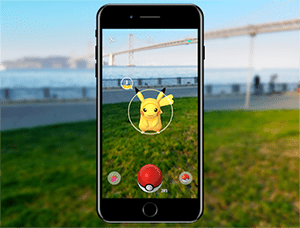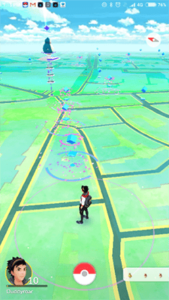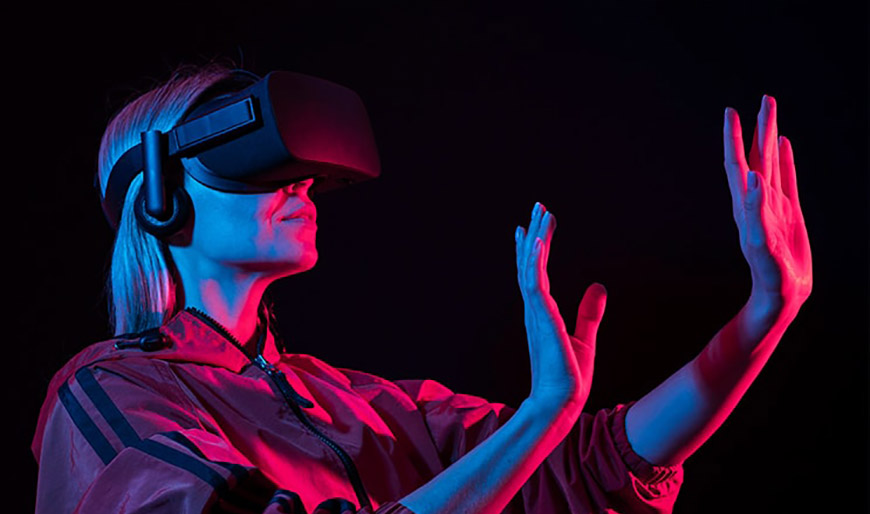JAVIER MARTIN
Computer science
What is AR? You ask me while you stare with your device in my blue device… (I’m sorry for this Becquer)
AR is one of these terms everyone speaks about, but still, it hasn’t a precise meaning, which, if you think about it, it reveals some questions:
While we have grown accustomed to reading about AR, are we capable of defining it? We have some clear images of what constitutes AR, but, are we even sure what is not considered AR? At first, AR may look like a simple term: Augmented Reality. It seems that we are talking about just everything that augments, that ads some information to the real world, are we?
The problem starts with what we mean by “add” and continues with what we mean by “reality.”
 The most straightforward AR application that comes to mind is probably Pokemon GO , where we have images of the real world being captured by the device’s camera while an (often) cute creature is drawn playfully over our world.
The most straightforward AR application that comes to mind is probably Pokemon GO , where we have images of the real world being captured by the device’s camera while an (often) cute creature is drawn playfully over our world.
But in the same APP, we also have a more diffused kind of AR, its ability to gamify the map: Pokemon GO converts into a game map just by adding some information on top of your standard chart: This old bus station is now a Pokemon stop, that school, now, a Pokemon gym.
Niantic (property of Google) implemented this map gamification on Pokemon GO’s big brother, Ingress, and ported to its next game as the main feature. (As a curiosity, Google Maps had a joke for its April fool’s day 2014, where Google overran the charts with Pokemons that could be captured by the user. Which probably makes this one of the most rewarding Aprils fools jokes in history if we have into account what may have come out from it).
 In Pokemon GO, the augments are a layer of virtual items, creatures and places on top of the reality, which is itself more abstract: is video feedback reality? It seems so. And what about location feedback? If we adhere to our previous definition, both features are augmenting reality. In fact, Ingress only had this reality map representation layer and was still considered an AR application.
In Pokemon GO, the augments are a layer of virtual items, creatures and places on top of the reality, which is itself more abstract: is video feedback reality? It seems so. And what about location feedback? If we adhere to our previous definition, both features are augmenting reality. In fact, Ingress only had this reality map representation layer and was still considered an AR application.
In the last few years, we have been talking about haptic feedback, a device’s ability to transmit information through the touch sense . We can see examples of this in devices like the Steam controller, the Taptic Engine in the iPhone 7, the Switch’s Joy-Cons, and the newer PlayStation5’s DualSense.
The steam controller represented the sensation of virtual interfaces as real ones (like the click of a mouse wheel) to your thumb.
The iPhone home button was so well done that, I had to turn it off and show my colleagues how the click disappears to truly make them believe that it was haptic feedback and not a real one.
The Nintendo Switch had a game based on haptics being so precise that it could simulate a box with marbles inside and the player would be able to guess how many were just by the feel.
And the new PlayStation controller moved this concept even more to the mainstream by adding a similar precise haptic feedback and adding haptics to its trigger-buttons. Imagine being able to identify each weapon immediately, not by looking at the small icon at the bottom of the screen, but with the trigger’s haptic response (as seen in the famous Fortnite).

All these examples of augmented feelings produced by the haptics could add a layer of extra information on top of the reality. For example, an AR product design system where the designer wears AR glasses and haptic gloves for simultaneously design and feel the ergonomics.
And the things go over and over, because now as we speak of AR glasses, are not those more like VR glasses?
Great, now we should talk about VR…and MR…and probably XR too!
But those are topics to talk about another day. Today, we are getting to the conclusion of our small trip around AR, which is that many things are technically considered AR. Still, our perception as consumers may be quite different from those that are building the product. In this case, we probably should ask ourselves just two questions:
1) Is the system’s reality a useful representation to our interests (regardless of whether these interests are didactic, ludic, or productive)?
2) And, in the same way, is the augment enough for these interests?








